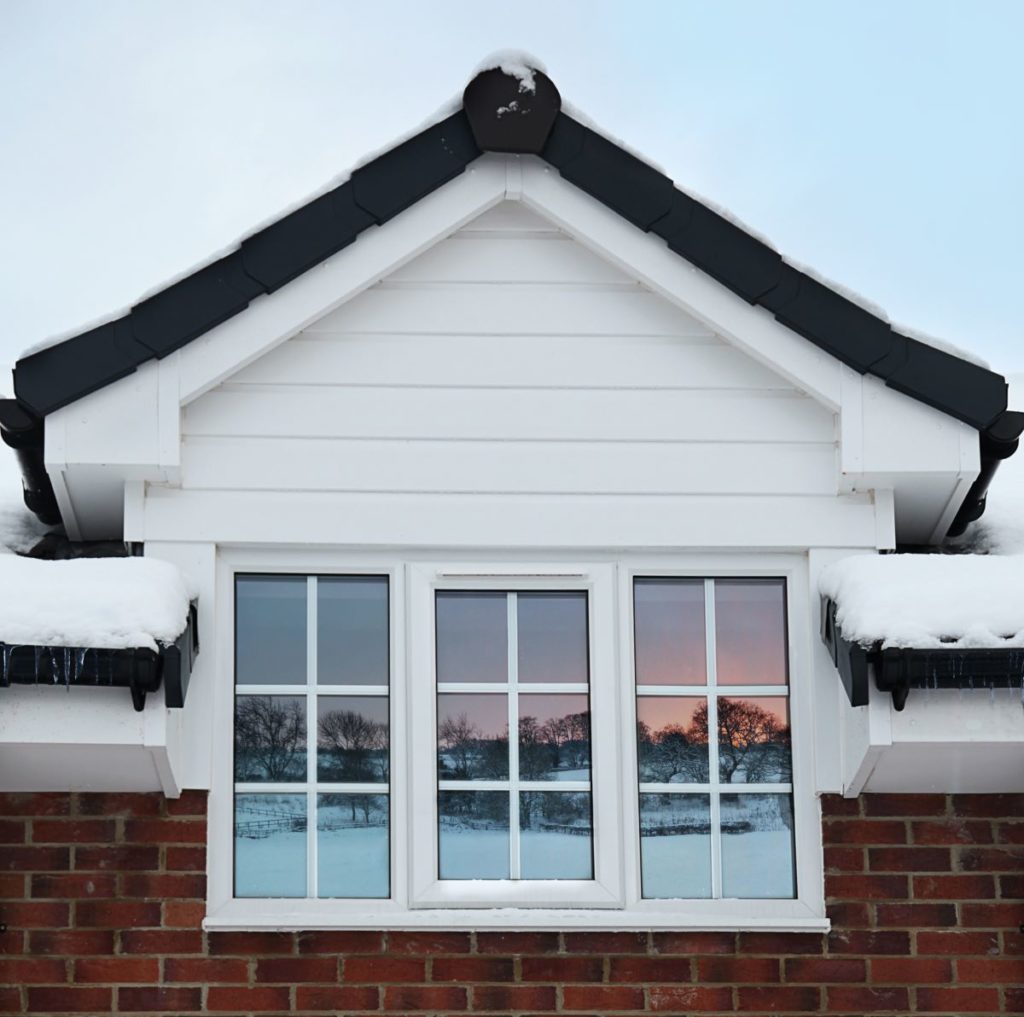As snow melts and the haze of winter fades away, it becomes more evident what the harsh season has done to your home. The cracked exterior paint, rotting door frames, and busted gutters are just a few of the winter damages your home can incur. Here’s a guide to preventing and fixing these post-winter nuisances.
Roof and gutters
Despite being such a crucial part of our houses, we often overlook our roofing. As a result, we often only notice when significant has incurred over time. Your roof is even more vulnerable to damage in winter when harsh weather conditions can cause cracking, leaks, and trapped water. Make sure to have your roof inspected before the weather gets too cold to ensure that it’s ready to face a season of harsh weather.
Gutters may not look like much, but they’re an integral part of your home’s structure. Failure to clean them up before the winter season could cause problems in the spring. They can also house fungi and mold when left unattended, which can cause mild to serious health issues for you and your household. Call gutter repair services to address this problem.
Formation of mold and water damage
Condensation occurs when warm air meets cold surfaces, and this is a frequent phenomenon during the winter. The moisture that’s produced makes an ideal breeding ground for mold to form. Being one of many silent killers you could have in your home, it’s important to prevent it.
You can prevent condensation by making sure that your home is properly insulated. This includes sealing any cracks or holes where moisture can enter. Lower indoor humidity levels by improving airflow in your home. Install exhaust fans in humid areas such as bathrooms or kitchens or open a window for a few minutes. You can also put shrink-wrap over your windows to reduce heat loss.
Cracking exterior paint jobs
Exterior paint can crack or peel when exposed to extreme temperatures. Don’t apply fresh coats of paint in the fall, as you’ll have to reapply too soon for your liking.
But that’s not the only reason you shouldn’t do exterior paint jobs in autumn. Another reason is the temperature. Paint can labels often state what temperatures are ideal for applying the paint. Most prescribe nothing lower than 50 to 55 degrees Fahrenheit. While some fall days – especially the earlier ones – may be even higher than those, as night falls, the temperatures may drop to the 30s or 20s. As the paint dries, it requires a temperature that’s 50 to 55 degrees Fahrenheit at the lowest. It’s not just so that the latex or oil in the paint can evaporate, but also so that chemical reactions can occur as the paint dries.
Damage to doors and windows
Install storm windows and doors. These protect your exterior doors and windows from the effects of harsh weather such as cracking or rotting. These may be especially helpful if your exterior doors are made of wood, one of the less durable materials for exterior doors. They also act as an extra measure of insulation. The best part is that you can remove them when winter is over and store them for the next time you’ll need them.

The aftermath of pests and rodents
Contrary to what most people believe, pests can still show up in your home in the winter. The harshness of the weather might make them even more likely to seek warmth in your home. While they’re there, rodents can chew away at the insulation you worked so hard – and paid so dearly – to have installed. The foam wraps you’ve wrapped around your pipes and the vinyl blanket you’ve laid across your attic floor might be slowly disappearing without your knowing. You may have to call pest control services if you find that they’re still there in the spring.
In the future, you can prevent a winter pest invasion by redoing your caulking and covering up cracks and holes. If there are any trees on your property that pests can use as a ladder to climb your house, make sure to have them trimmed. Your chimney can also act as an entry point for pests, so make sure that it’s in good condition.
As magical as we may believe the winter season to be, it’s not without its discomforts and damages. Protect your home from these by conducting inspections around your house. Ensure that cracks and holes are sealed to prevent air and water leaks and the entry of unwelcome guests. Install insulation and ventilation equipment and machinery to keep your home warm while combating the formation of mold. Lastly, save exterior paint jobs for fairer weather lest you intend to reapply it too soon because of cracks and peels.











